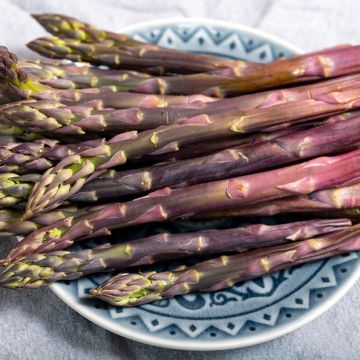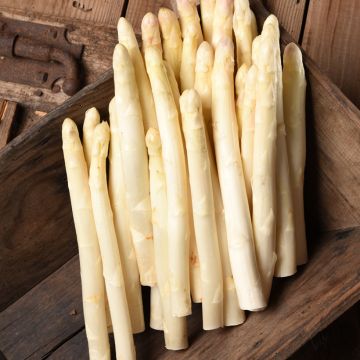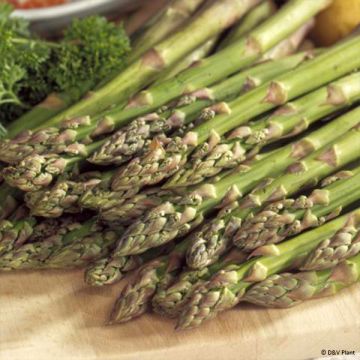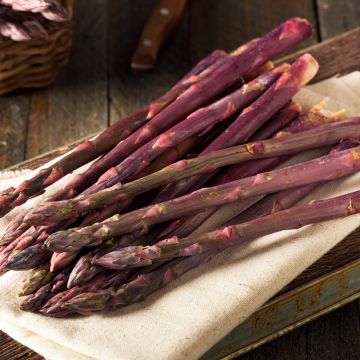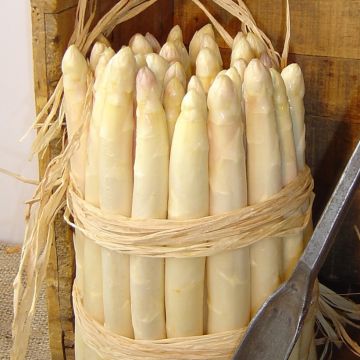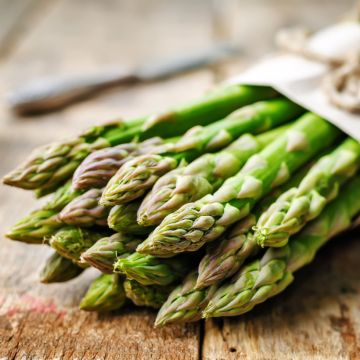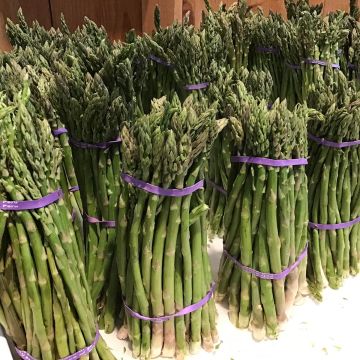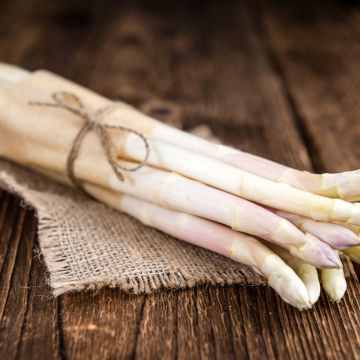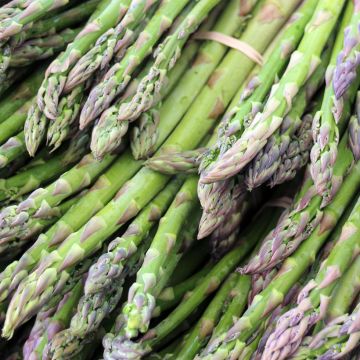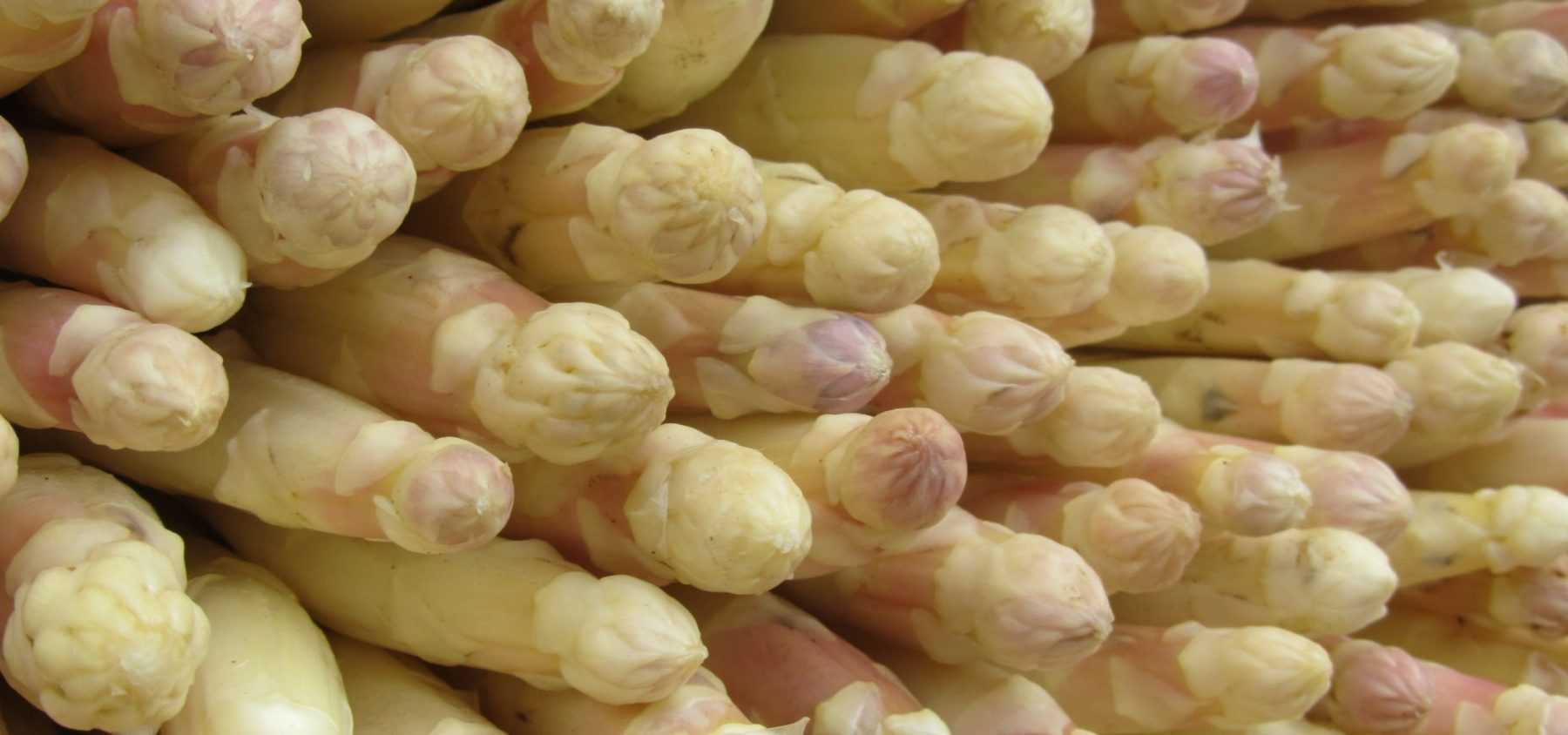
Growing Asparagus Successfully
Preparation, planting, earthing up, harvesting
Contents
The Asparagus is a very particular vegetable, harvested for its young shoots, also called spears, prized for their delicate and refined flavour. They’re often enjoyed in vinaigrette, but also in gratins, tarts or velouté soups. Asparagus cultivation, perceived as delicate and demanding, often raises questions in the vegetable garden. It’s true that it requires time (3 years before the first harvest) and space, but asparagus also has the advantage of being a perennial vegetable that can be harvested for several years! Discover all our tips for successful asparagus cultivation and generous harvests.
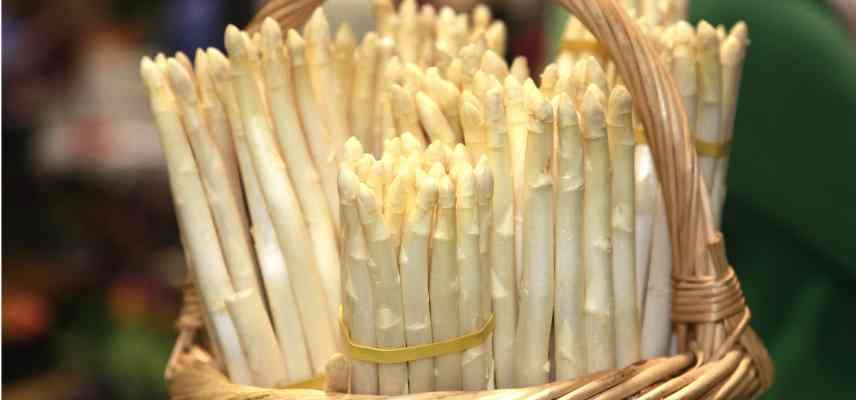
Which variety to choose?
The colour of asparagus varies depending on the amount of light it receives: to obtain white asparagus, they are deprived of sunlight by earthing up. The lack of light prevents them from photosynthesising, which turns them white. Growing green and purple asparagus does not require earthing up. The choice of variety depends on the intended cultivation method. Among the best varieties, we recommend, for example, the ‘Lima’ asparagus, an early variety with good yields, the ‘Argenteuil’ asparagus, particularly suited for white asparagus, or the ‘Rosalie’ asparagus, which produces deep violet spears.
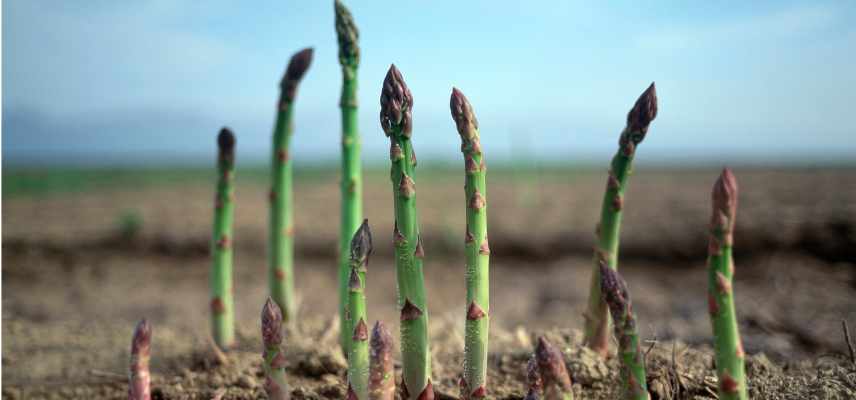
Read also
Planting asparagusWhere to plant asparagus?
Asparagus thrives in all climates. It prefers rich, light, and well-drained soil. It has a particular liking for rather sandy soils that warm up quickly in spring. Asparagus enjoys sunny positions, though it can also be grown in partial shade. This perennial vegetable will produce for many years (> 10 years), but its cultivation requires considerable space.
Discover other Asparagus plants
View all →Available in 1 sizes
Available in 1 sizes
Available in 1 sizes
Available in 1 sizes
Available in 1 sizes
Available in 1 sizes
Available in 1 sizes
Available in 1 sizes
Available in 1 sizes
When and how to plant asparagus?
Planting takes place in March-April (as early as February in mild climates) on a plot that was prepared and amended the previous autumn. Asparagus should be planted upon receipt, as they must not dry out.
- In autumn, dig trenches about 40 cm wide and 25 cm deep (15 cm for green and purple asparagus), spaced 1.5 m apart.
- Loosen the bottom of each trench with a spade or fork.
- Mix well-rotted compost or manure into the soil, and optionally some coarse sand to improve drainage.
- In March-April, create small mounds of soil in each trench, about 10 cm high and wide, spaced 50 to 60 cm apart.
- Place the crowns, tip upwards, on the mounds.
- Backfill the trench to cover the asparagus with about 3 cm of soil.
- All that remains is to water.
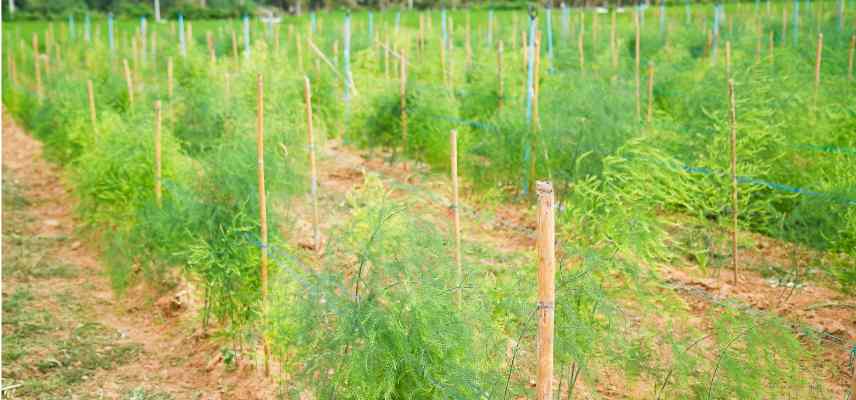
How to care for them?
The first harvest comes after three years of cultivation during which the asparagus intended to be harvested white will be earthed up as they grow. All asparagus plants require regular but moderate watering.
First year of cultivation:
The asparagus, regardless of colour, is covered with a 3 cm layer of soil. They will establish themselves and develop their roots. Maintenance involves regular weeding or mulching to limit the appearance of weeds.
Second year of cultivation:
The crowns are covered with:
- 7 or 8 centimetres (12 cm in light soil) of soil for green and purple asparagus,
- around twenty centimetres of soil for white asparagus,
Then, the spears are tied to stakes or trellis wire, arranged during planting, as they grow.
Third year (and subsequent years):
The third year of cultivation marks the first harvest, which takes place from April onwards.
White asparagus must be earthed up from March: this involves gradually forming mounds of soil, 30 to 40 cm high, around the spears. These mounds will be levelled in autumn.
For all asparagus, apply compost at a rate of 1 kg per m2.
Any earthing up/levelling and compost application should be repeated each year throughout the cultivation period.
What are the pests and diseases affecting asparagus?
Asparagus plants are not fragile, however, during cultivation, you may encounter:
- The asparagus beetle. This is a beetle that weakens plants by devouring the foliage. Control involves manually collecting the insects and spraying a solution based on pyrethrum (Tansy).
- The asparagus fly. Its larvae burrow tunnels in the stems, which deforms and inhibits the growth of the spears. It is advisable to burn the dried foliage at the end of the season.
The most common disease is violet root rot: this is a fungal disease that persists in the soil. It affects the base of the stems and roots, which then become covered with a purple felt-like coating. Symptoms include yellowing and drying of the stems. To prevent it, avoid planting asparagus in contaminated soil and grow leeks the year before establishing an asparagus bed.
→ Discover our tutorial on how to make a pyrethrum (tansy) solution.
When and how to harvest asparagus?
Harvesting takes place from April onwards and involves picking the asparagus as soon as it emerges from the soil. This is done using a spear knife, which allows you to cut each shoot at its base without needing to disturb the mound. In the first few years, harvest sparingly, over two to four weeks, then allow the asparagus to grow and stake them as they develop.
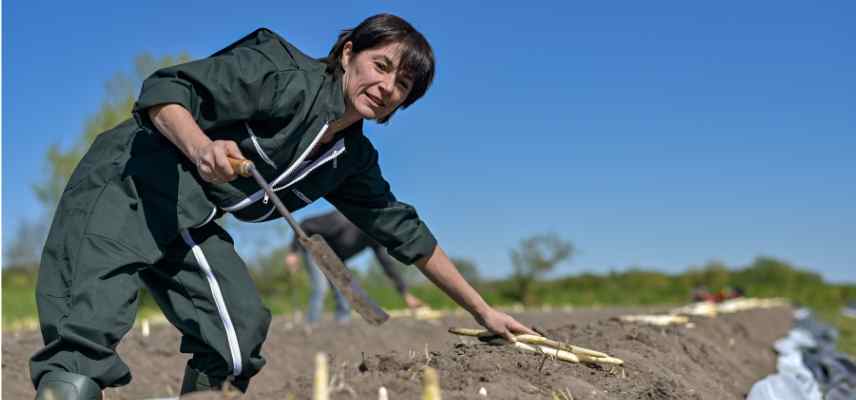
- Subscribe!
- Contents


































